When shopping for a vehicle, the sticker price is just the beginning of your financial commitment. The true cost of ownership extends far beyond the monthly payment, encompassing insurance, fuel, depreciation, and perhaps most importantly, maintenance and repairs.
Understanding which vehicles will drain your wallet with constant repair bills versus those that will serve you reliably for years is crucial for making an informed purchasing decision.
Vehicle maintenance costs can vary dramatically between makes and models, with some cars requiring less than $500 annually in upkeep while others demand over $2,000 per year just to keep them running smoothly.
According to recent industry data, Honda averages $428 annually in repair costs, while Toyota follows closely at $441, making these brands standouts for budget-conscious buyers.
On the opposite end of the spectrum, luxury brands like Land Rover, Mercedes-Benz, and Porsche can cost three to four times more to maintain annually.
The difference often comes down to several key factors: parts availability and cost, engineering complexity, brand reliability history, and the frequency of required services.
Mass-market vehicles from established manufacturers typically benefit from widespread parts availability, simpler designs, and decades of refinement that eliminate common failure points.
Conversely, luxury and performance vehicles often feature complex systems, expensive proprietary parts, and more frequent service intervals that contribute to higher ownership costs.
This comprehensive analysis examines ten vehicles that represent the extremes of the maintenance cost spectrum, providing detailed insights into why certain cars are maintenance bargains while others can become expensive mechanical nightmares for unsuspecting owners.
5 Cars That Cost Under $500 a Year to Maintain
These exceptionally economical vehicles feature robust engineering and readily available parts that minimize maintenance expenses through simple designs and proven reliability that reduces the frequency of costly repairs and component replacements.
Their thoughtful construction includes accessible service points and standardized components that enable quick, affordable maintenance procedures while utilizing common fluids and filters that keep operating costs remarkably low throughout ownership.
From extended service intervals that reduce routine maintenance frequency to durable components that resist premature wear, these budget-friendly vehicles continue operating reliably without requiring expensive specialty tools or procedures.
Owners consistently report annual maintenance costs below $400 with these dependable cars a remarkable achievement that proves affordable transportation doesn’t require sacrificing reliability or accepting frequent, expensive repairs throughout ownership.
1. Toyota Corolla
The Toyota Corolla stands as perhaps the most economical vehicle to maintain in the automotive landscape, with annual maintenance costs averaging just $362 per year.
This compact sedan has earned its reputation through decades of refinement, with its engine layout remaining relatively consistent throughout the decades, making it one of the easiest cars to work on.
The Corolla’s genius lies not in revolutionary technology but in the perfection of proven, simple engineering principles that prioritize reliability over complexity.
What makes the Corolla so affordable to maintain stems from Toyota’s conservative engineering approach. The naturally aspirated four-cylinder engines are understressed, typically operating well below their maximum capability, which significantly extends component lifespan.
The transmission, whether manual or automatic, uses time-tested designs that rarely require major repairs within the first 150,000 miles. The suspension system employs basic MacPherson struts and torsion beam rear axles that are both durable and inexpensive to service.
Parts availability represents another significant advantage for Corolla owners. As one of the world’s best-selling vehicles, replacement parts are manufactured in enormous quantities, driving down costs through economies of scale.

Whether you need brake pads, filters, or even major components like alternators or starters, aftermarket options abound at fraction of the cost of luxury vehicle equivalents.
Independent mechanics are intimately familiar with the Corolla’s systems, eliminating the need for expensive dealership visits for routine maintenance.
The Corolla’s maintenance schedule is refreshingly straightforward, requiring oil changes every 10,000 miles under normal driving conditions, with most other services following predictable intervals.
The timing chain, rather than a belt, eliminates the expensive interference engine risks associated with belt failure. Brake components typically last 50,000-70,000 miles, while the hybrid variants extend this even further through regenerative braking systems.
Quality control from Toyota’s manufacturing facilities ensures that defects are rare, and when issues do arise, they’re typically covered under comprehensive warranty programs.
The Corolla’s resale value retention also means that money spent on maintenance isn’t thrown into a depreciating asset, making it an excellent long-term financial decision for budget-conscious consumers seeking reliable transportation without the premium maintenance costs associated with more complex vehicles.
2. Honda Civic
The Honda Civic consistently ranks among the most affordable vehicles to maintain, with annual costs averaging around $368, making it a standout choice for value-conscious buyers.
Honda’s reputation for building bulletproof engines extends prominently to the Civic, where the naturally aspirated four-cylinder powerplants are renowned for their longevity and minimal maintenance requirements.
The Civic’s engineering philosophy prioritizes simplicity and durability over flashy features, resulting in a vehicle that delivers exceptional reliability without the complexity that drives up maintenance costs.
Honda’s VTEC (Variable Valve Timing and Lift Electronic Control) technology, while more sophisticated than Toyota’s approach, has been refined over decades to achieve remarkable reliability.
The system uses simple mechanical actuators and hydraulic pressure rather than complex electronic components, ensuring that even this advanced feature remains service-friendly.
The Civic’s transmission options, whether manual or CVT (Continuously Variable Transmission), are engineered for longevity, with the CVT variants featuring improved designs that address early generation reliability concerns.
The Civic’s maintenance advantages extend beyond the powertrain to every system. The electrical architecture is straightforward, using proven components and logical wiring layouts that simplify diagnosis and repair.

The suspension system, featuring MacPherson struts front and rear multi-link or torsion beam setups, provides excellent durability while using commonly available parts.
Brake systems are appropriately sized for the vehicle’s weight and performance characteristics, resulting in longer service intervals and lower replacement costs.
Parts availability for the Civic rivals that of the Corolla, with an extensive aftermarket supporting competitive pricing. Honda’s parts distribution network ensures that genuine components remain reasonably priced, while aftermarket manufacturers produce high-quality alternatives for virtually every wear item.
The Civic’s popularity among enthusiasts has also created a robust used parts market, providing additional cost-saving opportunities for maintenance and repairs.
Honda’s maintenance scheduling is designed with real-world driving conditions in mind, utilizing oil life monitoring systems that extend service intervals based on actual operating conditions rather than arbitrary mileage markers.
This intelligent approach reduces unnecessary maintenance while ensuring optimal engine protection. The Civic’s interference engine design is mitigated by timing chain usage in most variants, eliminating catastrophic failure risks associated with timing belt breakage. The Civic represents an exceptional balance of performance, efficiency, and maintenance affordability that few competitors can match.
Also Read: 5 Smoothest Idling Cars and 5 That Rattle at Stoplights
3. Toyota Camry
The Toyota Camry exemplifies how a midsize sedan can deliver premium features and comfort while maintaining exceptionally low ownership costs, with maintenance and repair costs totaling around $4,455 over 10 years, translating to approximately $445 annually.
This figure is remarkable for a vehicle in the competitive midsize segment, where complexity and features typically drive maintenance costs significantly higher. The Camry achieves this through Toyota’s systematic approach to engineering reliability into every component.
The Camry’s powertrain options, ranging from efficient four-cylinder engines to hybrid systems and even V6 variants, all share Toyota’s conservative engineering philosophy.
The four-cylinder engines utilize proven port and direct injection systems that balance performance and efficiency while minimizing carbon buildup issues that plague some competitive designs.
The hybrid powertrain, leveraging Toyota’s decades of experience with the Prius, offers exceptional reliability with minimal additional maintenance requirements beyond conventional vehicles.
Toyota’s Hybrid Synergy Drive system in the Camry Hybrid represents one of the most maintenance-friendly hybrid systems available. The electric motor-generators are sealed units requiring no periodic service, while the high-voltage battery is designed for the vehicle’s lifetime with sophisticated thermal management systems that prevent degradation.
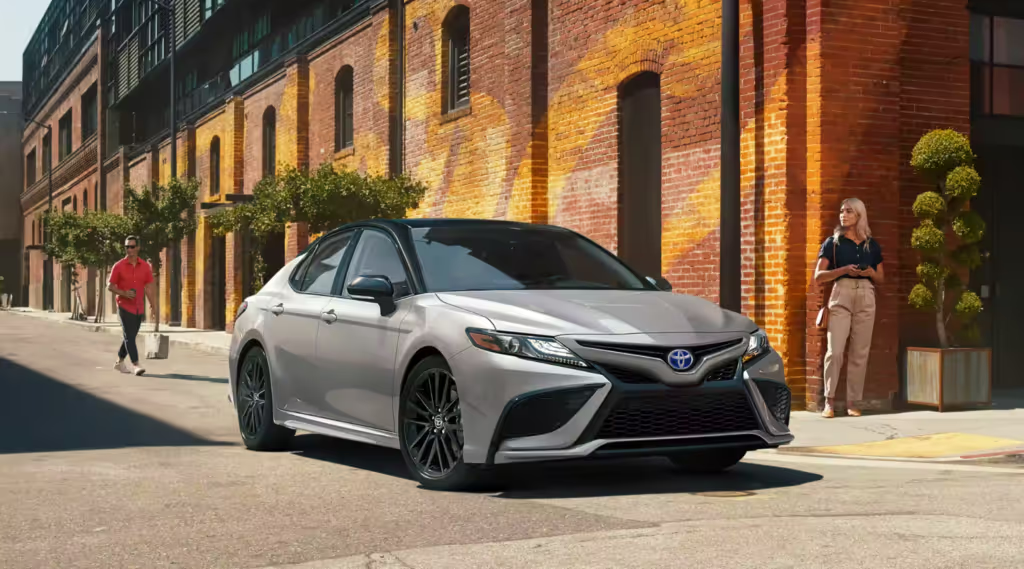
The transmission, a planetary gear-based power split device, contains no traditional clutches or bands to wear out, significantly reducing maintenance complexity and costs.
The Camry’s maintenance schedule reflects Toyota’s confidence in component durability, with extended intervals for most services and minimal requirements for expensive fluid changes.
The air conditioning system uses robust compressors and efficient designs that rarely require service beyond refrigerant top-offs. The brake system, particularly on hybrid models, benefits from regenerative braking that dramatically extends pad and rotor life while maintaining excellent stopping performance.
Quality control in Camry production facilities ensures consistent build quality that translates to predictable maintenance requirements. Toyota’s widespread dealer network and parts distribution system ensures that service and parts remain accessible and competitively priced regardless of location.
The Camry’s strong resale value retention means that maintenance investments preserve vehicle value, making it an excellent long-term ownership proposition.
The Camry also has a low 11.89% chance of requiring a major repair during the first 10 years, providing additional peace of mind for budget-conscious buyers.
4. Nissan Versa
The Nissan Versa represents exceptional value in the compact car segment, with maintenance costs averaging approximately $456 per year, making it one of the most affordable vehicles to own and operate.
Despite Nissan’s mixed reputation in some vehicle segments, the Versa benefits from conservative engineering and simplified systems that prioritize reliability and serviceability over performance and luxury features. This approach results in a vehicle that delivers basic transportation needs with minimal financial burden.
The Versa’s naturally aspirated four-cylinder engine represents mature technology that has been refined over multiple generations to eliminate common failure points.
The simple port fuel injection system avoids the complexity and carbon buildup issues associated with direct injection designs, while the basic engine management system uses proven sensors and actuators that rarely fail prematurely.
The manual transmission option provides exceptional durability and minimal maintenance requirements, while the CVT automatic transmission, despite some reliability concerns in other Nissan models, has proven relatively trouble-free in the lighter Versa application.
Nissan’s parts pricing for the Versa remains competitive due to the vehicle’s position as an entry-level model, where manufacturer support for affordable ownership is crucial for market success.
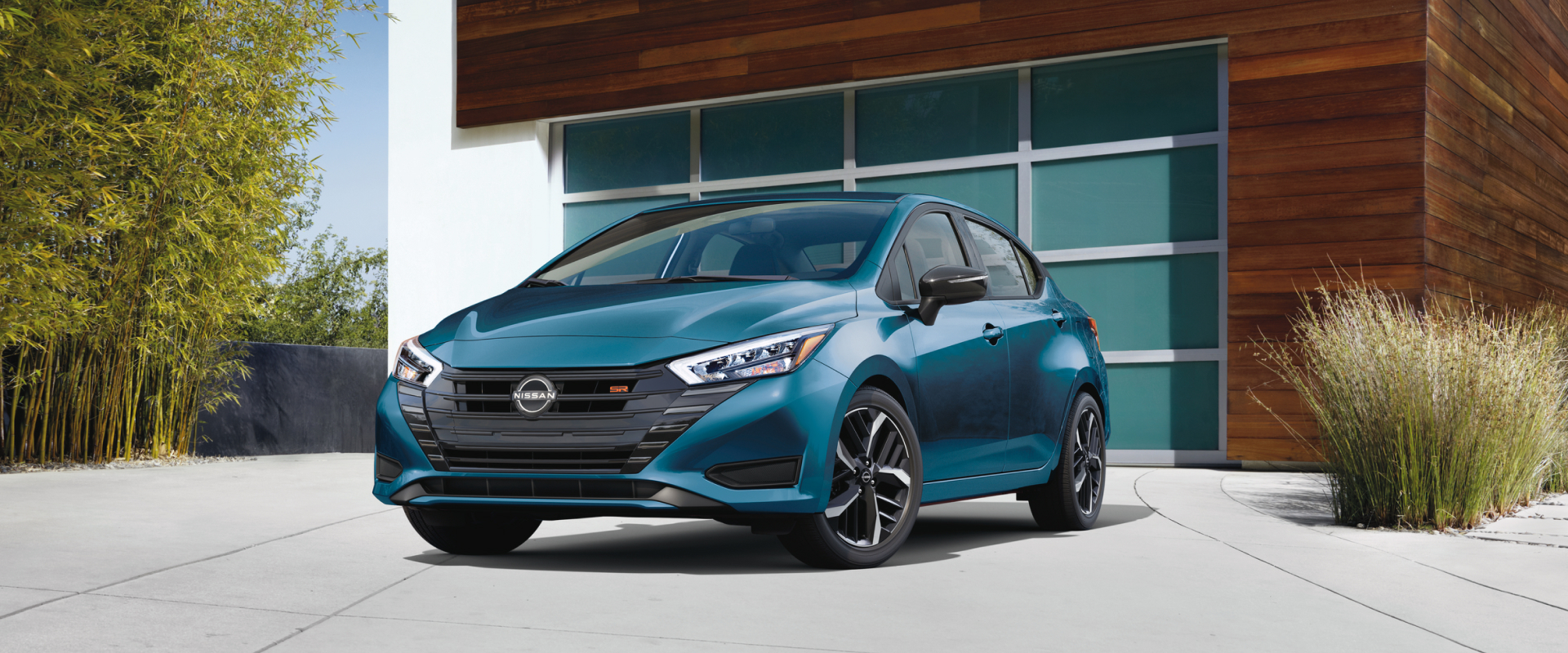
The extensive use of shared components with other Nissan models creates economies of scale that benefit parts availability and pricing. Independent mechanics find the Versa’s systems straightforward to service, with logical component placement and accessibility that reduces labor costs for routine maintenance and repairs.
The Versa’s maintenance schedule is designed for budget-conscious owners, with reasonable intervals for all services and minimal requirements for expensive synthetic fluids or specialized components.
The cooling system uses conventional designs with readily available parts, while the electrical system avoids complex modules and controllers that can be expensive to diagnose and replace.
The suspension system, while basic, provides adequate durability for normal driving conditions with inexpensive replacement parts. Quality improvements in recent Versa generations have addressed earlier reliability concerns, with better materials and improved manufacturing processes resulting in more consistent build quality.
The vehicle’s low purchase price and excellent fuel economy combine with minimal maintenance requirements to create an ownership proposition that’s difficult to beat for budget-conscious consumers.
While the Versa may lack the refinement and features of more expensive competitors, it delivers reliable transportation with predictable, affordable maintenance costs that make it an excellent choice for first-time buyers, students, and anyone prioritizing transportation value over luxury features.
Also Read: 5 Trucks With Bulletproof Engine Mounts and 5 That Constantly Fail
5. Hyundai Elantra
The Hyundai Elantra demonstrates how modern Korean automotive engineering has evolved to compete directly with Japanese reliability while maintaining affordable ownership costs, averaging approximately $468 annually in maintenance expenses.
Hyundai’s transformation from a budget brand to a quality competitor is perhaps best exemplified by the Elantra, which combines contemporary features, attractive styling, and excellent warranty coverage with genuinely low maintenance requirements that rival the best Japanese offerings.
Hyundai’s powertrain development for the Elantra focuses on proven technologies implemented with careful attention to durability and serviceability.
The naturally aspirated and turbocharged four-cylinder engines use advanced materials and manufacturing processes that ensure longevity while avoiding the complexity traps that can increase maintenance costs.
The dual-clutch and conventional automatic transmissions are designed with maintenance in mind, using accessible drain plugs and service points that facilitate routine fluid changes without expensive specialized tools.
The Elantra’s maintenance advantages extend throughout the vehicle’s systems, with electrical components sourced from respected suppliers and integrated using logical architectures that simplify diagnosis and repair.
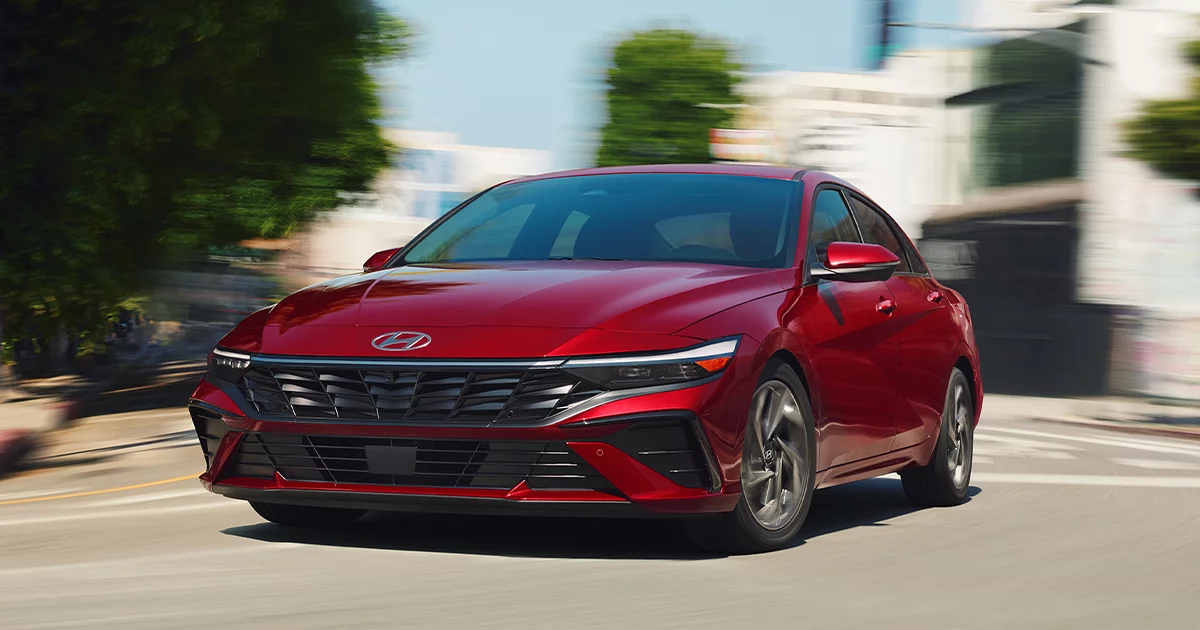
The air conditioning system uses efficient compressors and well-designed refrigerant circuits that rarely require service beyond routine maintenance. The brake systems are appropriately sized and use quality components that provide excellent service life while maintaining competitive replacement costs.
Hyundai’s commitment to affordable ownership is reflected in its parts pricing strategy, which keeps genuine replacement components competitively priced while encouraging the development of a robust aftermarket.
The company’s extensive warranty coverage, including 10-year/100,000-mile powertrain protection, provides additional confidence for buyers concerned about unexpected repair costs.
Service intervals are designed to balance protection with affordability, using oil life monitoring systems and extended change intervals where appropriate.
Quality control improvements in Hyundai’s manufacturing processes have resulted in consistently built vehicles that exhibit predictable maintenance patterns.
The Elantra’s modern design incorporates lessons learned from decades of automotive development, avoiding common failure points that plague older designs while implementing proven solutions that ensure reliability.
The vehicle’s competitive pricing and strong feature content combine with low maintenance costs to create exceptional value proposition that challenges traditional segment leaders while providing genuine alternatives for value-conscious consumers seeking reliable, affordable transportation without sacrificing modern amenities and safety features.
5 That Cost Cars Over $2,000 Annual Maintenance
These problematic vehicles suffer from complex engineering and expensive proprietary components that create excessive maintenance costs through frequent failures and specialized repair requirements that dramatically increase ownership expenses throughout their service lives.
Their overcomplicated systems include difficult-to-access service points and unique parts that require expensive specialty tools and procedures while utilizing costly synthetic fluids and premium filters that inflate routine maintenance costs.
From shortened service intervals that increase maintenance frequency to fragile components that fail prematurely, these expensive vehicles demand constant attention and create unexpected repair bills that exceed reasonable budgets.
Owners frequently report annual maintenance costs exceeding $3,000 with these unreliable cars devastating expenses that make these vehicles financially impractical for budget-conscious drivers seeking dependable transportation without bankruptcy-inducing repair bills.
1. BMW 7 Series
The BMW 7 Series represents the pinnacle of German luxury engineering, but this sophistication comes with a substantial financial commitment that extends far beyond the initial purchase price, with annual maintenance costs frequently exceeding $2,500.
This flagship sedan embodies BMW’s philosophy of pushing technological boundaries, incorporating cutting-edge systems and components that deliver exceptional performance and luxury but require specialized knowledge, tools, and parts that dramatically increase ownership costs for even routine maintenance procedures.
The 7 Series’ powertrain complexity begins with its sophisticated engine offerings, including twin-turbocharged inline-six and V8 engines that utilize advanced technologies like variable valve timing, direct injection, and complex turbocharging systems.
While these technologies deliver impressive performance and efficiency, they introduce multiple potential failure points that can result in expensive repairs.
The turbochargers, in particular, operate under extreme conditions and require premium synthetic oils and frequent changes to maintain reliability, with replacement costs often exceeding $3,000 per turbocharger.
BMW’s iDrive infotainment system, advanced driver assistance features, and electronic comfort systems represent impressive technological achievements but create a web of interconnected modules and sensors that can be expensive to diagnose and repair when issues arise.

The air suspension system, adaptive dampers, and active steering systems provide exceptional ride quality and handling but require specialized tools and knowledge for service, with component replacement costs that can easily exceed $1,000 for individual components.
The 7 Series’ electrical architecture incorporates dozens of control modules that manage everything from engine functions to seat adjustments, creating complexity that can confound even experienced technicians.
When these modules fail, replacement costs can be substantial, and programming requirements often necessitate dealership visits that command premium labor rates.
The vehicle’s extensive use of aluminum construction, while beneficial for weight reduction, requires specialized repair techniques and expensive parts when bodywork becomes necessary.
Maintenance schedules for the 7 Series are intensive, requiring frequent services with expensive synthetic fluids and specialized filters. The brake systems, designed to handle the vehicle’s substantial weight and performance capabilities, use high-performance compounds that wear quickly and cost significantly more than standard replacement parts.
The sophisticated cooling systems require specific coolants and complex bleeding procedures that increase service costs. Parts availability, while generally good through BMW’s network, comes at premium prices that reflect the vehicle’s luxury positioning, with even routine items like air filters and spark plugs costing multiples of equivalent parts for mainstream vehicles.
The 7 Series demands an owner prepared for the substantial ongoing financial commitment required to maintain these sophisticated systems properly.
2. Mercedes-Benz S-Class
The Mercedes-Benz S-Class sets the global standard for luxury sedans, but this leadership position comes with maintenance costs that regularly exceed $2,200 annually, making it one of the most expensive vehicles to maintain in the automotive landscape.
Mercedes-Benz’s commitment to incorporating the latest technological innovations and highest-quality materials results in a vehicle that delivers unparalleled luxury and performance but requires specialized expertise and premium components for proper maintenance and repair.
The S-Class powertrain lineup showcases Mercedes-Benz’s engineering prowess, featuring sophisticated turbocharged engines with advanced technologies like cylinder deactivation, complex variable valve timing systems, and integrated starter-generators in mild hybrid configurations.
These systems deliver impressive performance and efficiency but require specialized diagnostic equipment and extensive technical knowledge for proper service.
The nine-speed automatic transmissions use complex hydraulic controls and adaptive software that necessitate expensive specialized fluids and programming tools for maintenance procedures.
Mercedes-Benz’s AIRMATIC air suspension system exemplifies the S-Class’s technological sophistication while highlighting the maintenance challenges inherent in luxury vehicles.
This system provides exceptional ride quality and allows for various driving modes, but the air springs, compressors, and electronic controls represent expensive components that require regular service and eventual replacement. When air suspension components fail, repair costs can easily exceed $2,000 for comprehensive system restoration.

The S-Class’s interior represents the pinnacle of automotive luxury, featuring massaging seats, advanced climate control systems, premium audio equipment, and extensive electronic amenities.
While these features enhance the ownership experience, they also introduce numerous potential failure points that can be expensive to repair. The seat adjustment motors, massage pumps, and climate control actuators use specialized components that command premium prices and often require dealership service for proper repair.
Electronic systems in the S-Class manage everything from engine functions to ambient lighting, creating an interconnected network of control modules that can be challenging and expensive to service when issues arise.
The advanced driver assistance systems, while impressive in their capabilities, use expensive sensors and cameras that can be costly to replace or calibrate.
The vehicle’s sophisticated security systems and keyless entry technology require specialized programming tools and procedures that typically necessitate dealership service.
Mercedes-Benz parts pricing reflects the brand’s luxury positioning, with even routine maintenance items costing significantly more than equivalent parts for mainstream vehicles.
The requirement for specific Mercedes-Benz approved fluids, filters, and components further increases maintenance costs, while the complexity of many systems necessitates specialized labor that commands premium rates.
The S-Class demands an owner who appreciates its exceptional capabilities and is prepared for the substantial ongoing investment required to maintain these sophisticated systems at their optimal performance levels.
3. Audi A8
The Audi A8 represents the Germanic approach to luxury sedan engineering, combining sophisticated all-wheel-drive technology with advanced electronics and premium materials, resulting in annual maintenance costs that frequently exceed $2,100.
Audi’s quattro all-wheel-drive system, while providing exceptional traction and handling characteristics, introduces additional complexity and maintenance requirements that significantly impact ownership costs compared to rear-wheel-drive luxury competitors.
The A8’s powertrain options showcase Audi’s technological leadership, featuring sophisticated turbocharged engines with advanced direct injection systems, variable valve timing, and complex exhaust after-treatment systems.
The twin-turbocharged V8 engines deliver impressive performance but require premium synthetic oils, frequent filter changes, and specialized diagnostic equipment for proper maintenance.
The turbocharging systems operate under extreme conditions and require careful attention to cooling system maintenance to prevent expensive failures.
Audi’s quattro all-wheel-drive system, while providing superior traction and stability, incorporates multiple differentials, transfer cases, and electronic controls that require regular service and can be expensive to repair when issues arise.
The system’s complexity necessitates specialized tools and knowledge for proper diagnosis and repair, with major component failures potentially requiring extensive disassembly and expensive parts replacement. The additional drivetrain components also increase the number of fluids requiring regular service, adding to routine maintenance costs.

The A8’s electronic systems represent some of the most advanced technology available in the automotive industry, including sophisticated infotainment systems, advanced driver assistance features, and extensive electronic comfort and convenience systems.
While these technologies enhance the ownership experience, they also create numerous potential failure points that can be expensive to diagnose and repair.
The MMI (Multi Media Interface) system, while user-friendly, incorporates complex electronics that can be costly to service when problems occur. Audi’s commitment to lightweight construction incorporates extensive use of aluminum in the A8’s structure, which provides benefits for performance and efficiency but can be expensive to repair when accident damage occurs.
The specialized welding techniques and materials required for aluminum repair necessitate specifically trained technicians and expensive equipment, increasing both insurance costs and out-of-pocket expenses for bodywork.
The A8’s sophisticated suspension systems, including available air suspension and adaptive damping, provide exceptional ride quality and handling but require specialized service and expensive replacement components.
When these systems require service, the costs can be substantial, with air suspension compressors, struts, and electronic controls representing significant expense items.
Parts availability through Audi’s network is generally good, but prices reflect the vehicle’s luxury positioning and technological sophistication, with even routine maintenance items costing significantly more than equivalent parts for mainstream vehicles.
The A8 demands an owner who values its technological sophistication and is prepared for the substantial ongoing investment required to maintain these advanced systems properly.
4. Jaguar XF
The Jaguar XF embodies British luxury and performance heritage but comes with maintenance costs that regularly exceed $2,000 annually, reflecting both the complexity of its sophisticated systems and the challenges associated with maintaining a relatively low-volume luxury vehicle.
Jaguar’s commitment to distinctive styling and dynamic performance results in a vehicle that delivers a unique character and driving experience but requires specialized knowledge and expensive components for proper maintenance and repair.
The XF’s powertrain lineup features sophisticated supercharged and turbocharged engines that deliver impressive performance but require careful maintenance to ensure reliability and longevity.
The supercharged V6 and V8 engines use complex induction systems with intercoolers and sophisticated engine management that can be expensive to service when issues arise.
The turbocharging systems require premium synthetic oils and frequent changes to maintain reliability, with replacement costs for failed components often reaching thousands of dollars.
Jaguar’s electrical systems represent both a strength and a challenge for XF owners, providing advanced features and sophisticated control systems but creating complexity that can be expensive to diagnose and repair.
The vehicle’s extensive use of electronic modules to control various functions creates interdependencies that can make troubleshooting challenging and expensive.
When electronic components fail, replacement parts often command premium prices due to Jaguar’s relatively low production volumes compared to mainstream manufacturers.
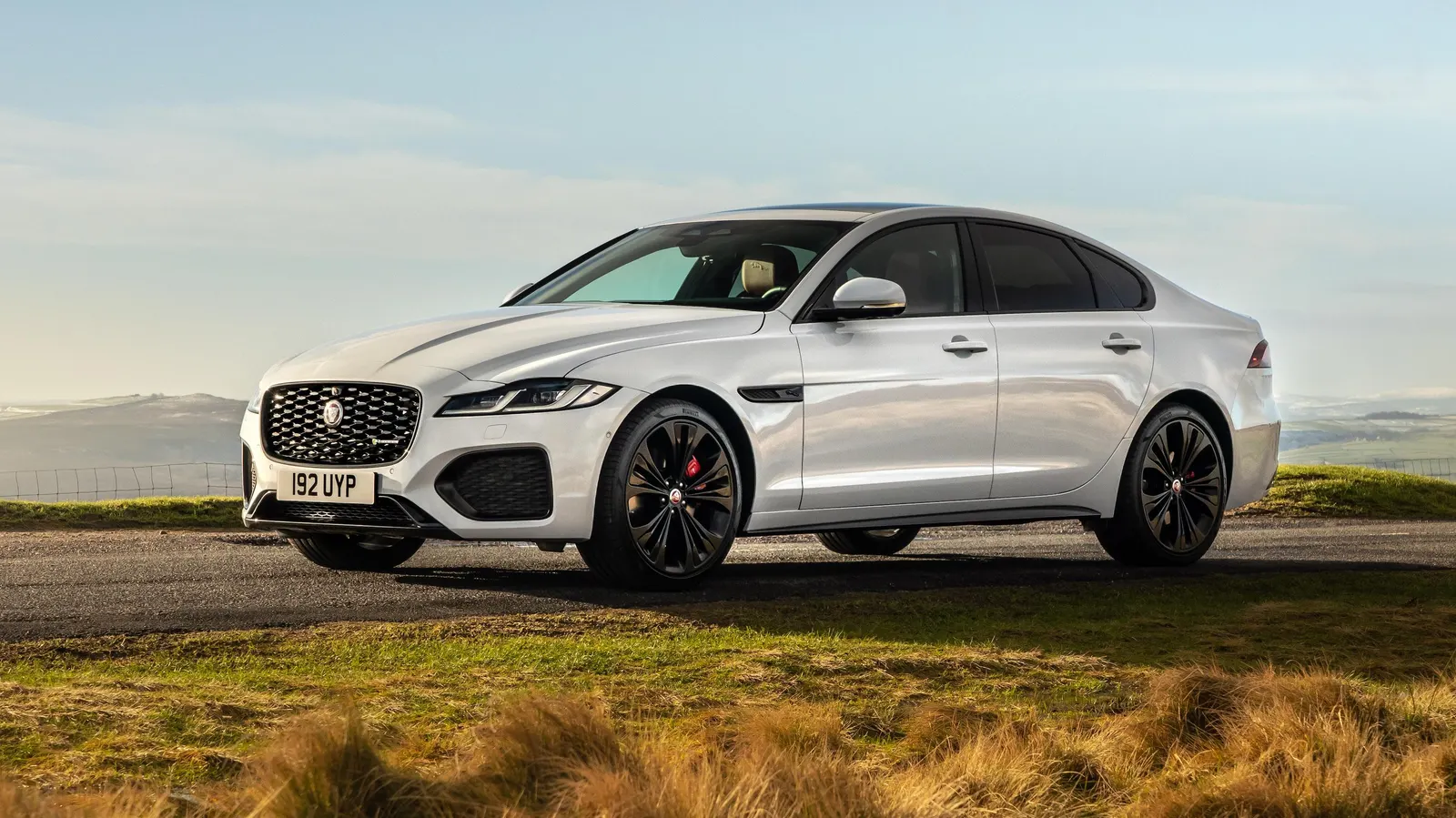
The XF’s sophisticated suspension systems, including available adaptive damping and electronic stability systems, provide exceptional ride quality and handling characteristics but require specialized service and expensive replacement components.
The air suspension systems, when equipped, use complex electronic controls and expensive air springs that can be costly to maintain and repair. Even conventional suspension components are often specifically engineered for Jaguar’s requirements, resulting in higher parts costs than equivalent components for mainstream vehicles.
Jaguar’s commitment to luxury and refinement is evident throughout the XF’s interior, featuring premium materials and sophisticated electronic systems that enhance the ownership experience but can be expensive to maintain.
The climate control systems use complex electronic controls and servo motors that can be costly to repair when failures occur. The premium audio systems and advanced infotainment features, while impressive in their capabilities, incorporate specialized components that can be expensive to service or replace.
Parts availability for the XF can be challenging due to Jaguar’s relatively small market share and specialized components. While Jaguar’s dealer network provides access to genuine parts and specialized service, the costs are typically higher than those for mainstream luxury vehicles with larger production volumes.
The requirement for specialized diagnostic equipment and technical knowledge often necessitates dealership service for complex repairs, commanding premium labor rates. Independent service options are limited due to the specialized tools and knowledge required for proper service.
The XF appeals to buyers seeking distinctive British luxury and performance but demands an owner prepared for the substantial ongoing investment required to maintain its sophisticated systems and unique character properly.
5. Land Rover Range Rover
The Land Rover Range Rover represents the ultimate in luxury off-road capability but commands some of the highest maintenance costs in the automotive industry, with annual expenses frequently exceeding $2,800.
This iconic vehicle combines sophisticated all-terrain capability with luxury appointments and advanced technology, creating a unique ownership proposition that comes with substantial ongoing financial commitments that reflect both its complexity and its position as a low-volume luxury vehicle.
The Range Rover’s powertrain options showcase advanced engineering designed to provide both on-road refinement and off-road capability, featuring sophisticated turbocharged engines with complex exhaust after-treatment systems and advanced electronic controls.
The supercharged V8 engines deliver impressive performance but require premium synthetic oils, frequent filter changes, and specialized diagnostic equipment for proper maintenance.
The diesel engines, while offering excellent torque and efficiency, incorporate complex emissions control systems that can be expensive to maintain and repair.
Land Rover’s Terrain Response system represents innovative technology that automatically adjusts vehicle systems for optimal performance in various conditions, but this sophistication comes at a cost in terms of maintenance complexity.
The system incorporates multiple electronic control modules, sensors, and actuators that can be expensive to diagnose and repair when issues arise.
The advanced all-wheel-drive system uses complex electronic controls and multiple differentials that require specialized service and can be costly to repair when components fail.
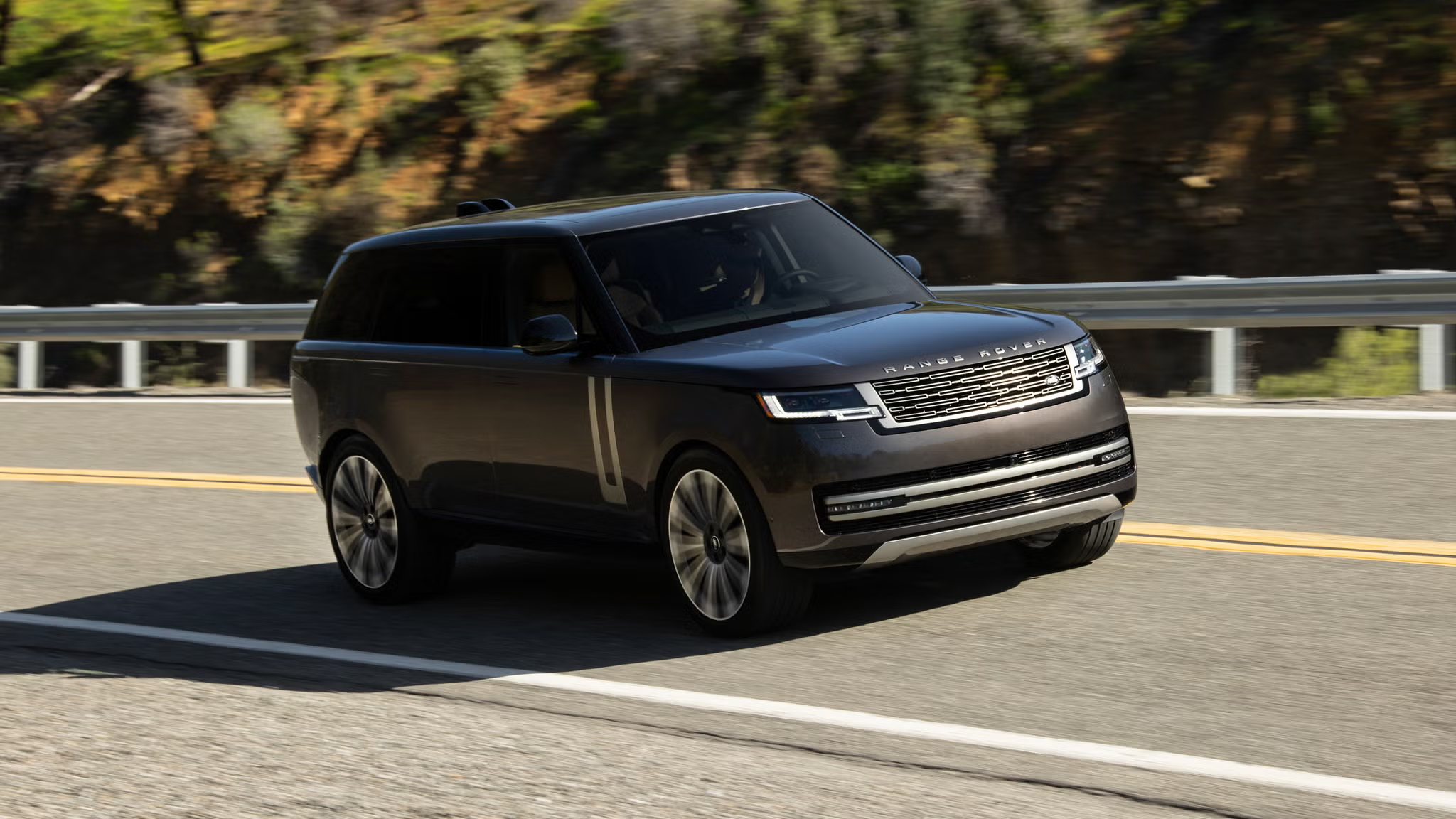
The Range Rover’s air suspension system provides exceptional ride quality and off-road capability but represents one of the most expensive systems to maintain in the automotive industry.
The air springs, compressors, and electronic controls are sophisticated and effective, but can be extremely costly to repair or replace when failures occur.
Complete system restoration can easily cost $4,000-$6,000, and individual component failures often require multiple related repairs due to system interdependencies.
Electronic systems throughout the Range Rover manage everything from engine functions to terrain response, creating a complex network of interconnected modules that can be challenging and expensive to service.
The advanced infotainment system, while impressive in its capabilities, uses sophisticated electronics that can be costly to repair when problems occur.
The extensive use of electronic controls for comfort and convenience features creates numerous potential failure points that can result in expensive repair bills.
Quality control challenges that have historically affected Land Rover products can result in premature component failures and unexpected repair costs, though recent improvements have addressed many earlier reliability concerns.
Parts availability through Land Rover’s dealer network is generally good, but prices reflect the vehicle’s luxury positioning and low production volumes, with even routine maintenance items costing significantly more than equivalent parts for mainstream vehicles.
The specialized tools and knowledge required for proper service often necessitate dealership visits that command premium labor rates. The Range Rover appeals to buyers seeking uncompromising luxury and capability who understand and accept the substantial ongoing investment required to maintain these sophisticated systems at their optimal performance levels.
Also Read: 5 Vehicles With Rock-Solid Head Gaskets and 5 That Blow Regularly

